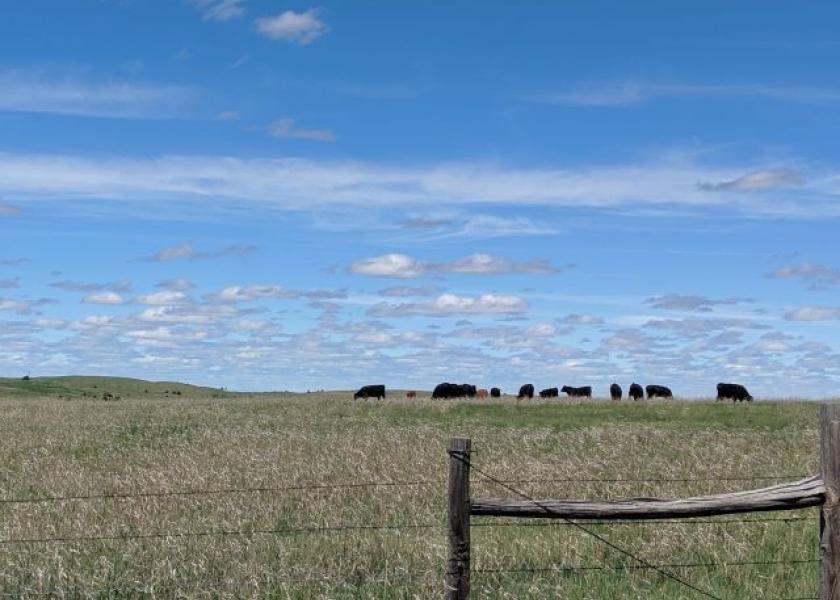Too Much of a Good Thing: Ionophore Toxicity Discovered the Hard Way

In mid-May, 3,000 yearlings were placed on grass. Only one month later, cattle started dying, reaching a total death loss of 70 head by mid-July. Additionally, at the end of the grazing season, the herd had only gained an average of one-half pound, and when processed, many of the carcasses were condemned.
What could have possibly caused this cattle phenomenon?
Scott Fritz, a board-certified veterinary toxicologist and assistant professor at Kansas State University (KSU) College of Veterinary Medicine, and Brad White, DVM, director of the KSU Beef Cattle Institute (BCI), discuss this toxicology case in a recent Bovine Science with BCI “Tox Talk” podcast and share what led to the death loss, low gain and condemned carcass results.
Dropping Like Flies
Based on the initial information for the case, White says, bovine respiratory disease or pneumonia come to mind first. Especially when dealing with a group of 3,000 calves and assuming they were co-mingled when put on grass, the likelihood of a respiratory outbreak is possible.
However, since the pattern of death was not directly aligned with what is normally seen in a respiratory-type case, Fritz adds, from a toxicology standpoint, water access and some “off the wall questions” may need addressed.
“At the peak of the death loss, when losing 10 to 12 head per day, and the cattle are separated across multiple, big pastures, we have to wonder if there is something else going on,” Fritz notes. “When they are starting to see that many head turn up, that’s just too many on a yearling calf operation. We just don’t see that with many infectious diseases.”
When this event occurred, the producer quickly reached out to local veterinarians for guidance. The veterinarians performed necropsies—finding enlarged livers and hearts, along with fluid built up in the thoracic and abdominal cavities. While these results fit the bill for high altitude disease in cattle, these cattle were not located in a high altitude area.
Cattle Feeding Situation
Considering the known facts up to this point, Fritz begins looking at the cattle feeding situation. On grass, the cattle were not receiving any kind of supplemental feed or mixed ration, as the grass availability in early summer was sufficient. The only added nutrition was free-choice access to a mineral supplement.
Fritz explains, taking a look at the mineral supplement was the first step—asking what is in the mineral, if there had been any changes to the mineral, was there a recent delivery, etc. The investigation continued through further lab examination of the necropsy tissues submitted, as well as mineral sample testing.
Diagnosing the Cattle
After review of the mineral and fixed heart tissue histopathology—the study of diseased cells and tissues using a microscope—the cattle deaths were found to be caused by an ionophore. Specifically, microscopic lesions in the heart were the tell-tale sign of ionophore toxicity.
After further analyzing the mineral feeding situation, the issue became very clear. The mineral was labeled to be fed at a rate of three ounces per head per day, yet it was being fed on a free-choice basis. Fritz explains it’s likely that a number of cattle overate the mineral, which resulted in death.
Producers Beware
Feeding mineral supplements according to label directions proves to be extremely important. White explains, free-choice mineral supplements or feed, such as a creep feed ration, usually contain a limiter. Limiters, such as salt or ionophores, keep the cattle from eating too much. In this case, the mineral was likely meant to be limit-fed or possibly added in a total mixed ration (TMR) to ensure animals were given the correct amount.
When it comes to ionophores in cattle, there is a relatively narrow margin of safety, Fritz says. However, feeding ionophores provides benefits that far outweigh any negatives. Considering the number of beef cattle on feed that are fed an ionophore, these cases are very few and far between, he adds, and when fed properly, ionophores are safe and effective.
In this situation, the producer did the two best things possible—contacted local veterinarians and removed the remaining mineral. While a number of the cattle had already been exposed to lethal amounts of the mineral, pulling the supplement likely saved many in the remaining herd.
In the event of unexplained cattle deaths or anomalies on an operation, producers should contact their veterinarian for post-mortem examination and help submitting the correct samples to the diagnostic lab for investigation. Fritz adds, ocular fluid from the eye can be a great tool in helping identify or rule out other causes of acute death in cattle.
The full “Tox Talk” conversation between Dr. Fritz and Dr. White can be found on KSU's Beef Cattle Institute website.
More on Ionophores:
Using Ionophores with Grazing Beef Cattle
Be Aware When Feeding Cattle Ionophores: An Overdose May Prove Deadly







